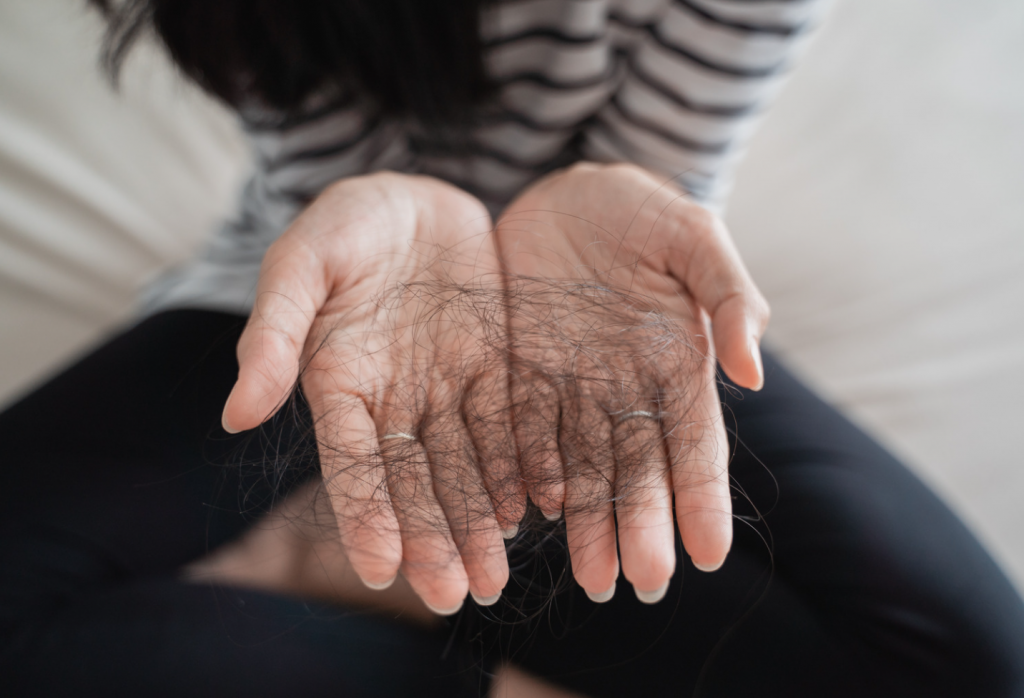The physical appearance of hair loss often affects a woman’s mood, worsening her quality of life. A fairly common type of hair loss in women is androgenetic alopecia, also known as female pattern hair loss.
It is characterized by a progressive loss of terminal hair around the front of the head and at the vertex of the scalp. It is important to first diagnose it and then provide adequate therapeutic responses to improve this condition. We discussed androgenetic alopecia in men in our last newsletter; here we will highlight some differences and things that are specific to women with this condition.
Dr. Celia Gonzalo Gleyzes – Neolife Medical Team
Some features of this type of alopecia
Androgenetic alopecia in women or female pattern hair loss (FPHL) is characterized by the progressive loss of terminal hair in the front of the head and at the vertex of the scalp, with a visible reduction in hair density. Compared to men, terminal hair loss is usually incomplete and follows the front line.
The prevalence is lower in Asian women than in Caucasian women.

FPHL may occur after puberty, but it most commonly occurs after menopause.
As in males, the process of miniaturization of the follicle occurs; in the affected areas. we will observe fine hair, of the vellus hair type. The duration of the growth phase (anagen phase) of the hair follicles is reduced, going from a few years to just weeks or months.
Do hormones play a part in all this?
Women with hormonal problems, like hyperandrogenism, that is, who have higher levels of “male hormones” (e.g. polycystic ovary, ovarian hyperthecosis, androgen secreting tumors of the ovaries or adrenal glands) may develop an earlier FPHL. However, most women with FPHL have normal androgen levels.
Theories that explain FPHL include an increased sensitivity of hair follicles to androgens, the influence of estrogens, and genetics (multiple genes involved).
How is FPHL diagnosed?
It is essential to develop a complete medical history in which the patient is asked about things like age of onset, signs of virilization, obstetric background, treatments, use of supplements or hormone therapy, and family history of alopecia.
The scalp will then be examined to identify the distribution pattern and sometimes a trichoscopy (magnified observation) will be performed. Finally, it will be necessary to carry out an analysis with adequate hormonal determinations (1).
Treatment
The first recommendation is usually topical minoxidil at 5%. It should be applied daily to the affected areas of the scalp. Its effects are visible after 4 months, and the treatment should be continued for at least 12 months, in order to assess the full response. Latanoprost, a prostaglandin analogue and a molecule that improves the oxygenation of the hair follicle, may be incorporated into the formula of this topical solution.
Next, we have spironolactone, an aldosterone antagonist, which competitively blocks the androgen receptor and weakly prevents their synthesis. We usually start with a low dose to check tolerance. Some women may experience headaches, decreased libido, and orthostatic hypotension (low blood pressure), among other symptoms. Combining minoxidil with spironolactone is a good therapeutic recommendation.
Although many women take 1 mg finasteride (a drug that decreases the transition to dihydrotestosterone), the studies conducted do not show good results with this dose, but rather with higher doses or with dutasteride (an administration outside their licensed indication).
Like men, women might resort to other treatments such as platelet-rich plasma (PRP) scalp injections that provide growth factors in large concentrations or low level laser therapy (LLT).
If the problem is chronic and conspicuous, surgery, i.e.hair implants, would be an option to consider (2,3,4).
Once again, we invite women who suspect they suffer from FPHL to consult with a doctor who is able to indicate and supervise treatment, to avoid self-medication and its possible complications.
BIBLIOGRAPHY
(1) Up To Date: Female pattern hair loss (androgenetic alopecia in women), Pathogenesis, clinical features, and diagnosis
(2) Up To Date: Female pattern hair loss (androgenetic alopecia in women): Treatment and prognosis.
(3) https://www.ncbi.nlm.nih.gov/pubmed/30261560 Dermatol Online J.
(4) https://link.springer.com/article/10.1007%2Fs10103-017-2385-5

